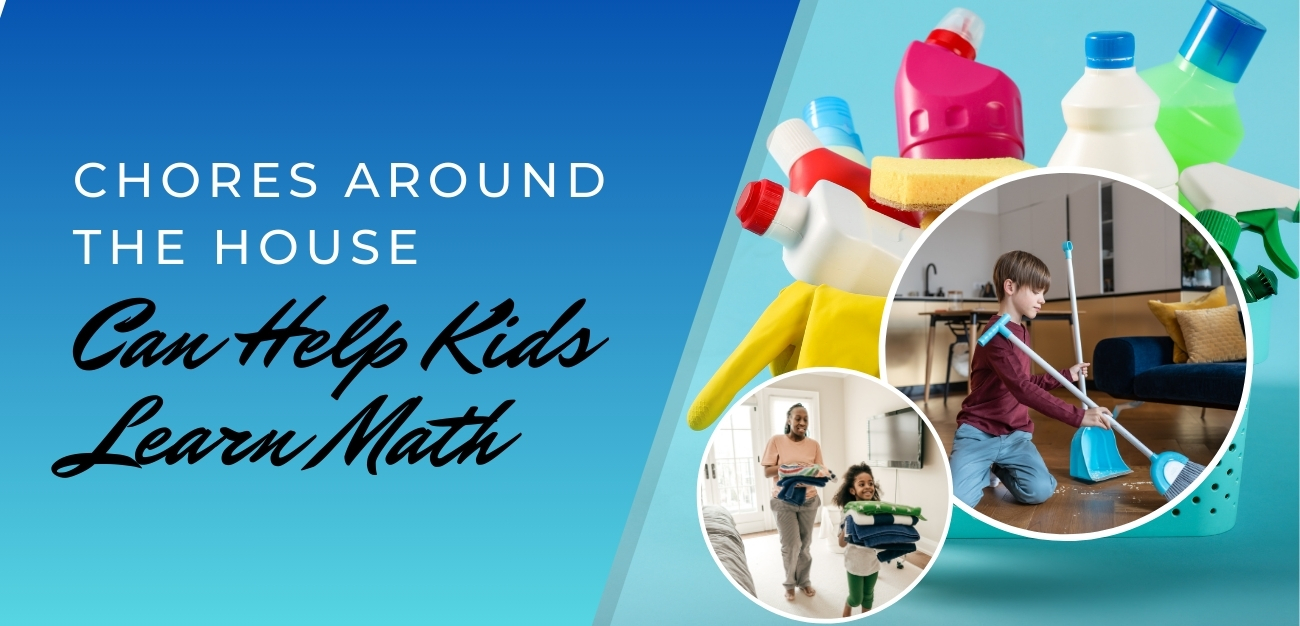With busy schedules and the amount of screen time, finding engaging ways to help your children learn math might seem challenging. But, how about turning everyday chores into fun math lessons? Yes, it’s entirely possible! In this blog post, we will explore how simple household chores can double-up as interesting math lessons for your children.
Remember, the key is to make learning math interactive. When children see how math applies in practical situations, it becomes more interesting and significant to them.
The chores for children we are about to list have a twofold benefit. Firstly, they help your children understand and appreciate the importance of contributing to household tasks. Secondly, these chores provide real-life contexts for learning and reinforcing math concepts.
So, are you ready to embark on this thrilling journey of merging math skills with daily tasks? Let’s dive in and discover how these simple chores around the house can transform your child’s math learning experience.
Learn And Clean: Enhancing Math Skills While Doing Housework
Teaching your children mathematics doesn’t have to be a dull, formal affair. While multiplication charts and long division are essential, they can often seem dry and detached from the reality of everyday life. But what if you could turn daily household chores into fun mathematical challenges? Imagine if your children could learn numbers, counting, measurements, fractions, and even logic while participating in family chores? Let’s explore some ways you can make this happen.
On Laundry Day: Learning with Loads
Laundry is a chore almost everyone has to deal with, but for kids, it can be a treasure trove of math opportunities. Consider this: as you sort laundry into piles, you are classifying – a crucial skill in set theory and logic. As you load the washing machine, you adjust for the capacity – this involves understanding quantities and proportions.
- Sorting: Ask your child to sort the laundry by colour or type. Count the number of items in each pile. Discuss greater than, less than, and equals using the piles.
- Loading the Washer: Discuss the concept of capacity. Explain that the washing machine can only hold a certain amount, and then attempt to estimate how many items it will take to fill.
During Meal Times: Cook Up a Math Lesson
Meal prep time in your household can easily be transformed into a lab for fractions and measurements. As a bonus, this also allows for lessons in health and nutrition. Here’s how you can employ the magic of math in your kitchen:
- Weighing ingredients: Use a kitchen scale to weigh ingredients. This teaches children the concept of mass and how different items may appear similar in size but can weigh differently.
- Measuring volumes: Use measuring cups and spoons to illustrate fractions. A 1/2 cup of sugar helps to teach the fraction 1/2, and so forth.
- Counting and Division: Ask your child to set the table. Discuss how every family member needs one plate, one fork, one spoon, etc. Then, let your child distribute these items evenly among the setting places.
Incorporating these activities into your everyday life not only helps your child understand math applicability but reinforces the concept that learning is an ongoing, life-long process.
Garden Time: Dig into Math
Gardening can be a hands-on, interactive way to dig into math. Estimation, counting, measurements, and even geometry can sprout from a day of gardening. Consider these activities:
- Area measurements: When planning a garden or a flower bed, have your child help you measure the gardening space. It’s a brilliant way to introduce mathematical concepts, such as area and perimeter.
- Counting seeds: Ask your child to count seeds or plants, introducing cardinal numbers. This can become more complex by asking them to plant in rows and columns, introducing concepts of multiplication.
Why not combine math enrichment with a zen garden session? The beauty of the learning process is that it doesn’t need to be confined to the classroom. Use these tips to make math fun and relevant for your child, and lighten your housework load at the same time. Remember, every chore holds the potential for a math lesson – you just need to discover it!
The Chore Chart Equation: Balancing Tasks and Math Skills
Imagine creating a chore chart that doesn’t just distribute tasks but also lets your child practice their math skills? Interesting, right? Here’s how it can work.
The first step is to enlist all the chores that need to be done during the week. Leave some room for the number of times each chore needs to be completed and let your child help you fill this in. This is a great way to get them involved and provide a sense of ownership.
Next, assign each chore a value. The complexity of the chore could determine its value; for instance, a more difficult task could be worth more points.
- Washing the dishes – 2 points
- Cleaning their room – 5 points
- Washing the car – 10 points
Encourage them to add up the points for the chores they have done each day. This helps them practice their addition skills. But don’t stop there; introducing other math concepts like multiplication, division, and fractions could make the learning more extensive and exciting.
Tip: To introduce fractions, you could split a big chore into several parts each with its own point. For example, cleaning the room could be divided into: picking up toys, making the bed, and dusting. Each task could represent a fraction of the total points for cleaning the room.
Here’s where it gets interesting. At the end of the week, have your child add up their points and you do the same. Use this as an opportunity to introduce the concept of comparison: which number is bigger? Who did more chores? This initiates a conversation about greater than, less than, and even equal to.
Hold a weekly session to review and discuss the chore chart. Not only does this improve your child’s understanding of numbers, but it also teaches them responsibility, commitment, and the fruit of hard work. You may consider allowing your child to exchange their points for rewards. This could be staying up past their bedtime, choosing a movie for movie night, or even a small allowance. This introduces the real-world concept of employment and how it relates to income.
It’s important to make learning math as relatable and as practical as possible. This will not only help your child understand math concepts better, but will also create an interest in the subject which could have long term benefits. Who knew chores could be this fun and educational, right?
Mastering Practical Skills
To wrap it all up, juggling regular chores with hands-on math learning is a great way to make math less daunting and more engaging for your little ones. They not only master practical skills, but also develop stronger number sense and problem-solving abilities. Bring math to life with the humble house chore and let’s turn ‘boring’ into ‘fun’!
To learn more ticks and tips about getting math help for kids, sign up for our Bulletin.





